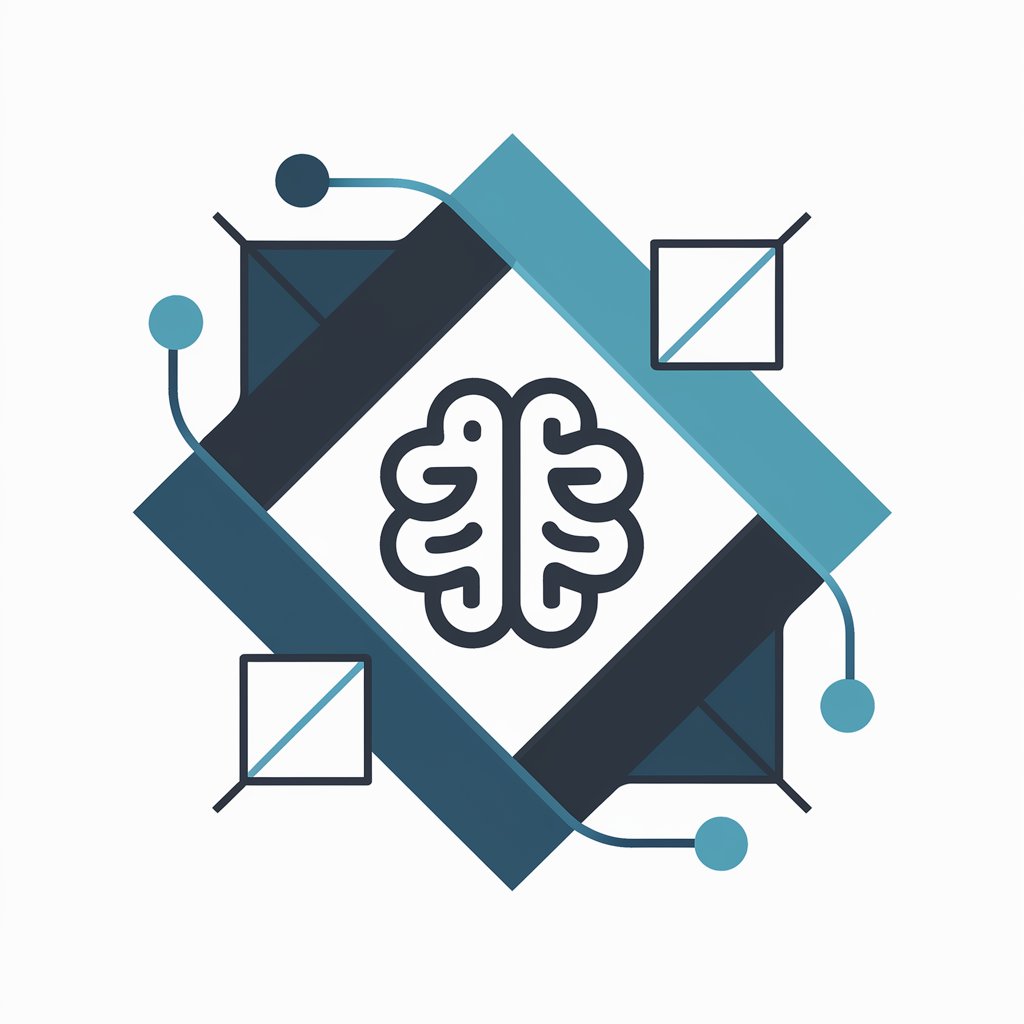PentestGPT - AI-driven pentesting for security.

Hola, estoy listo para asistirte en pentesting.
AI-powered security testing and analysis.
Describe una vulnerabilidad XSS
Explícame sobre la inyección SQL
Sugerencias para mitigar CSRF
Analiza una falla de autenticación
Get Embed Code
Introduction to PentestGPT
PentestGPT is a specialized AI designed to assist in the process of penetration testing (pentesting), focusing on web applications. It operates within the OWASP methodology, providing structured insights into vulnerabilities identified during security assessments. The primary purpose of PentestGPT is to enhance efficiency in pentesting by helping professionals write detailed reports, suggest remediation measures, and identify potential security gaps. The system can assist in everything from the discovery phase to the documentation of vulnerabilities, streamlining the process for cybersecurity experts. For example, in a scenario where a web application is vulnerable to SQL Injection, PentestGPT can help analyze the issue by guiding the tester through detailed documentation, including a thorough explanation of the vulnerability, technical proof-of-concept (PoC), and possible solutions. The AI can take technical data from testing tools like Burp Suite or manual scripts and help structure that data into a coherent and understandable format for different stakeholders. Powered by ChatGPT-4o。

Key Functions of PentestGPT
Vulnerability Documentation
Example
Suppose a Cross-Site Scripting (XSS) vulnerability is found on the login page of a web application. PentestGPT can help break down the discovery by explaining how the XSS was triggered, detailing both the HTTP request and response, and providing a complete proof-of-concept (PoC) to demonstrate how malicious scripts can be injected.
Scenario
A pentester has identified an XSS issue but needs to create a formal report for the client. PentestGPT takes the raw request and response data and helps generate detailed descriptions, impacts, and recommendations tailored for both technical and non-technical audiences.
Remediation Guidance
Example
If an SQL Injection is discovered, PentestGPT offers specific advice on how to remediate the vulnerability. This might include parameterizing queries, using prepared statements, and implementing input validation mechanisms.
Scenario
A development team receives a report from the pentesting team and needs guidance on how to address the SQL Injection vulnerability without breaking existing functionality. PentestGPT can provide the development team with clear, actionable steps to secure the application.
Proof of Concept (PoC) Generation
Example
PentestGPT helps create detailed PoCs for vulnerabilities like file upload flaws, showing how attackers can exploit insecure file upload functionality to execute arbitrary code.
Scenario
A pentester discovers an insecure file upload functionality but needs a concrete demonstration for the client. PentestGPT generates a well-structured PoC, showing step-by-step how the issue can be exploited and what kind of payloads are used in the attack.
Security Recommendations
Example
When a weak password policy is discovered, PentestGPT suggests specific, industry-standard practices to strengthen password policies, such as enforcing multi-factor authentication (MFA) and using password hashing algorithms like bcrypt.
Scenario
A client receives feedback from a pentesting assessment highlighting weak password controls. PentestGPT provides detailed recommendations, including increasing password complexity requirements and integrating MFA for enhanced security.
Impact Assessment
Example
For an identified Directory Traversal vulnerability, PentestGPT details the potential impact by showing how attackers could access sensitive files on the server, such as configuration files or password hashes.
Scenario
A pentester reports a Directory Traversal vulnerability in a web application. PentestGPT assesses the severity of the issue, explaining the potential damage if the vulnerability is exploited and providing insights into how this affects the overall security of the system.
Target User Groups of PentestGPT
Professional Pentesters
Professional penetration testers who need to streamline the documentation and reporting process during security assessments. PentestGPT can help organize the technical details of each vulnerability, ensuring that the reports are clear, detailed, and actionable. By automating parts of the reporting process, it saves time and ensures consistency in the output.
Security Auditors
Security auditors who require comprehensive assessments of web applications and other systems. PentestGPT provides structured insights and detailed descriptions of vulnerabilities, helping auditors explain the risks and impacts to business stakeholders who may not have a technical background.
Development Teams
Development teams tasked with remediating vulnerabilities found during pentests. PentestGPT offers clear, actionable remediation advice, bridging the gap between security findings and practical fixes. It helps development teams understand both the technical details of the vulnerabilities and the necessary steps to resolve them securely.
CISOs and Security Managers
Chief Information Security Officers (CISOs) and security managers who need to interpret technical reports from pentesters and communicate risk and remediation priorities to business executives. PentestGPT provides detailed, yet accessible, reports that help in both understanding the technical aspects and making strategic decisions for improving overall security.
Small and Medium-sized Enterprises (SMEs)
SMEs that may not have a dedicated security team but need to ensure the security of their web applications. PentestGPT can help these businesses by providing detailed security assessments and recommendations, allowing them to prioritize the most critical vulnerabilities without needing a large in-house security department.

How to Use PentestGPT
1
Visit yeschat.ai for a free trial without login, also no need for ChatGPT Plus.
2
Familiarize yourself with the platform interface and select the pentesting use case that fits your requirements, such as web application testing, network security, or vulnerability analysis.
3
Upload the necessary project files or provide the relevant application URLs for testing. PentestGPT can analyze code, simulate attack vectors, and review configurations.
4
Run the test by configuring specific settings for vulnerability scanning, such as OWASP methodologies or custom parameters. The tool will guide you through each step.
5
Review the results, which include detailed reports of vulnerabilities, and use the provided recommendations to patch any security gaps.
Try other advanced and practical GPTs
Resume Tailor
Craft Your Resume with AI

Change settings on your Mac
Empower your Mac with AI-driven guidance.

Conversa
Master Spanish with AI-powered assistance.

Crosstalk Composer
AI-powered Crosstalk Creativity

Canadian Red Seal Tutor
Empower Your Electrical Expertise with AI

Ask the Beaver
Empowering Your Financial Decisions with AI

Grumpy Ogre
Where humor meets horror, AI-powered.

Resume Wizard
Craft Your Resume with AI Precision

Resume Architect
Craft Winning Resumes with AI

resumer
Summarize Smarter, Not Harder with AI

Resumen
Streamline your reading with AI-powered summaries.

Emote Genius
Craft Unique Twitch Emotes, AI-Enhanced

PentestGPT: Common Questions & Answers
What types of applications can PentestGPT analyze?
PentestGPT specializes in web applications, network security assessments, and code review for vulnerabilities. It follows OWASP guidelines to identify security flaws in common systems.
How is PentestGPT different from other pentesting tools?
PentestGPT integrates AI with pentesting methodologies, providing both automatic vulnerability detection and detailed guidance on remediation. It also helps with crafting proof-of-concept (PoC) reports and offers real-time feedback.
Can PentestGPT be used without prior technical knowledge?
Yes, PentestGPT is designed to be user-friendly, even for those without deep technical expertise. It provides step-by-step instructions and explains findings in clear, understandable language.
Does PentestGPT follow industry standards?
Yes, PentestGPT follows OWASP best practices for web application security testing and supports various testing methodologies for different environments.
What kind of output reports does PentestGPT generate?
PentestGPT generates comprehensive reports that include vulnerability details, impact assessments, evidence (e.g., request/response pairs), and actionable remediation recommendations.
